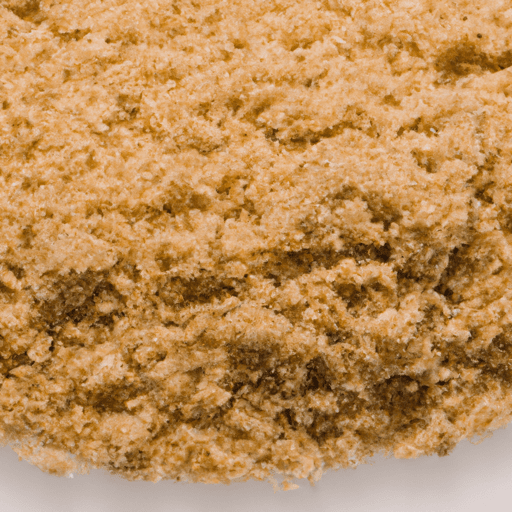Discover the Magic of Asafoetida Powder in Cooking
If you’re a seasoned home cook or someone who loves to explore the diverse world of spices, then you’ve likely encountered the unique and intriguing asafoetida powder. Also known as “hing” or the “devil’s dung,” this pungent spice has a long history and a myriad of culinary applications that will delight your palate. In this blog post, we’ll delve into the taste, common uses, nutritional value, and fascinating facts surrounding asafoetida powder.
Uncovering the Flavor
Asafoetida powder is known for its strong and distinct aroma, reminiscent of onions and garlic. However, don’t let the potent smell deceive you! When used in cooking, the spice transforms and imparts a subtle and savory flavor to your dishes. It heightens the umami notes while adding a certain depth that keeps your taste buds craving for more.
Versatility in the Kitchen
This unique spice has been a staple in Indian cuisine for centuries, particularly in vegetarian and vegan dishes. Asafoetida powder serves as a regional substitute for onion and garlic, which are avoided in some dietary practices. Its ability to mimic these flavors is truly remarkable.
Here are some popular uses of asafoetida powder in cooking:
- Curries and stews: Sprinkling a pinch of asafoetida powder while sautéing onions and other aromatics adds an unforgettable flavor to curries and stews. It provides a robust foundation to the dish, enhancing the overall taste.
- Legumes and lentils: Asafoetida powder pairs exceptionally well with legumes and lentils, known for their flatulence-inducing properties. Adding a small amount of it during the cooking process helps to aid digestion, reduce bloating, and add a delightful twist to your dal or bean-based recipes.
- Pickles and chutneys: A pinch of asafoetida powder in pickles and chutneys lends a complex and tangy flavor profile. It balances the sourness and enhances the overall taste of these condiments, resulting in an irresistible accompaniment to your meals.
- Garnishes: In some regions, asafoetida powder is used as a finishing touch to various dishes. Sprinkling it over stir-fries, raitas, or even roasted vegetables gives a final aromatic boost that takes your dish to another level.
Nutritional Value and Health Benefits
Apart from its remarkable culinary qualities, asafoetida powder offers several health benefits. It contains essential nutrients, including carbohydrates, proteins, fiber, calcium, phosphorus, and iron. Asafoetida is also known to have antioxidant, anti-inflammatory, and antimicrobial properties, which contribute to its potential health advantages. Even a small amount of this spice can go a long way in promoting gut health, reducing bloating, and aiding digestion.
Surprising Facts and History
Did you know that asafoetida powder has been used since ancient times? It is believed to have originated in Iran and was adopted by various cuisines worldwide. In traditional medicine, it has been utilized for its medicinal properties, from aiding digestion and reducing flatulence to acting as a remedy for respiratory issues.
Asafoetida also has an interesting nickname, “devil’s dung.” This moniker was given due to its strong, pungent smell, which can be off-putting to some. However, fear not! Once cooked, it mellows down, releasing a delightful flavor that truly elevates your culinary creations.
Embrace the Magic of Asafoetida Powder
Asafoetida powder is an exceptional spice that adds a unique touch to your cooking endeavors. Its ability to mimic the flavors of onion and garlic, along with its distinctive taste and nutritional benefits, make it a valuable asset in any passionate cook’s kitchen.
Next time you’re experimenting with Indian cuisine or simply looking to enhance your favorite recipes, don’t hesitate to sprinkle in some asafoetida powder. Unleash the magic of this mystical and versatile spice, and embark on a culinary journey that will delight your taste buds and leave you craving for more.
Asafoetida Powder
Origin: Asafoetida powder, also known as hing, is derived from the resinous gum of the Ferula species, particularly Ferula assa-foetida. It is native to the Middle East and Central Asia, and it is widely cultivated in countries such as Iran, Afghanistan, and India.
Common Uses: Asafoetida powder has been used for centuries as a culinary spice and in traditional medicine. It is commonly used in Indian cuisine, especially in vegetarian dishes, where it is used as a digestive aid and flavor enhancer. It adds a strong, pungent flavor to dishes and is particularly popular in curries, stews, lentil dishes, and pickles. Due to its potent aroma, it is sometimes referred to as “devil’s dung.”
Nutritional Benefits: Asafoetida powder is known for its digestive properties and has been traditionally used to alleviate flatulence and aid digestion. It contains numerous compounds, including volatile oils, resin, and various sulfur compounds. However, it is consumed in such small quantities that it does not provide significant nutritional benefits on its own.
Unique Properties: Asafoetida powder is particularly notable for its strong and distinct aroma. When raw, it has a pungent and unpleasant smell, akin to rotting garlic or sulfur. However, when cooked, the powder transforms, offering a unique flavor that complements various dishes.
Historical Significance: Asafoetida has a long history of use in traditional medicine, particularly in Ayurvedic and traditional Chinese medicine. It has been credited with various medicinal properties, including its potential as an anti-inflammatory, antiviral, and antimicrobial agent. Historically, it has also been associated with magical and mystical properties in certain cultures and was used as a ward against evil spirits.




Use the share button below if you liked it.
It makes me smile, when I see it.